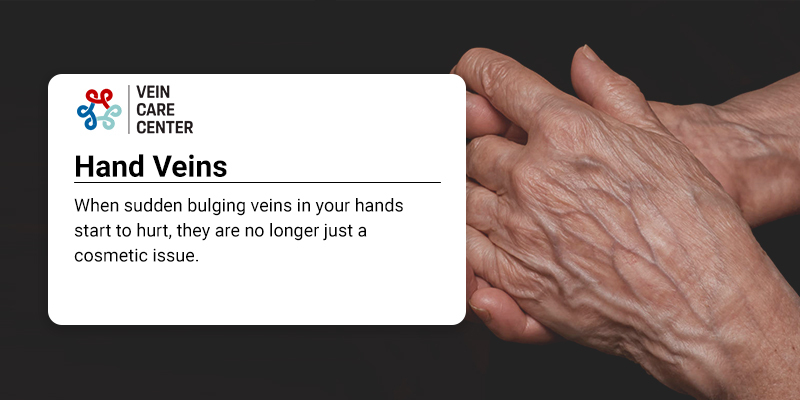

While varicose veins most often appear on the legs and spider veins are common on the face, you can still have problem hand veins and foot veins. When sudden bulging veins in your hands start to hurt, they are no longer just a cosmetic issue. You need medical attention from a top-rated vein specialist, like Dr. Jonathan Arad, at the Vein Care Center located in New York City and New Jersey. Call today for a consultation.
Your hand veins and foot veins are responsible for taking blood that is poor in oxygen back to your heart and lungs. Sometimes, these veins develop medical problems. Perhaps the blood doesn’t all go back, but rather pools in the veins. Maybe the vein walls weaken enough to leak. Problems lead to swollen veins, often accompanied by pain. They can appear as bluish-green varicose veins or small superficial blood vessels on the skin.
Problematic veins can develop anywhere in the circulatory system, creating visible facial veins, arm veins and leg veins. By choosing an expert vein specialist, like Dr. Jonathan Arad and the doctors from the Vein Care Center, you can be assured that the veins in your hand or foot are correctly diagnosed. Dr. Arad is a board-certified surgeon with vast experience in a variety of venous diseases.
The doctors at this practice prefer to create personalized treatment plans, which requires an accurate diagnosis first. Schedule a vein consultation at one of our multiple locations, the Financial District, Greenwich Village and Midtown Manhattan, or Upper East Side in New York City, as well Paramus, Riverdale, Englewood Cliffs, Cranford and East Brunswick in New Jersey.

Your veins use a system of valves that open and close as blood flows through. These valves keep your blood flowing in the proper direction. When these valves develop problems, the blood inside the vein isn’t completely emptied. Over time, the blood pools, increasing the pressure on the vein walls and causing the veins to swell.
Most often, the valves in the veins don’t fail overnight. It usually takes time, which is why vein problems happen more frequently in older Americans. Your valves can become defective for several reasons, such as:
Common signs, like a swollen vein on your foot or twisted bulging veins on your hands, are easy to recognize. But sometimes, your vein problems may show up as just a sharp pain in the foot vein. Your vein specialist with years of experience in the field can correctly diagnose your vein problem and prevent it from escalating through diagnostic tests and an exam.
A correct diagnosis enables your doctor to deliver the most appropriate form of treatment. Because symptoms overlap, a vein specialist, like Dr. Arad, has to eliminate other vein problems, such as:
"I cannot say enough about the amazing results I have had with my veins. Since my visit to the vein care center, my wife keeps saying how happy and content I look.
Chris L.When a vein in the foot hurts or hand veins hurt, you may need an assortment of treatments to address the problem. Your vein specialist gives careful consideration to the severity of the condition and its location. Dr. Arad may recommend several minimally invasive treatments, such as:
No matter which therapy is right for you, you can trust the vein doctors to take care of the bulging veins in your hands or that swollen vein on top of your foot. Contact us today to schedule an appointment at our nearest location.